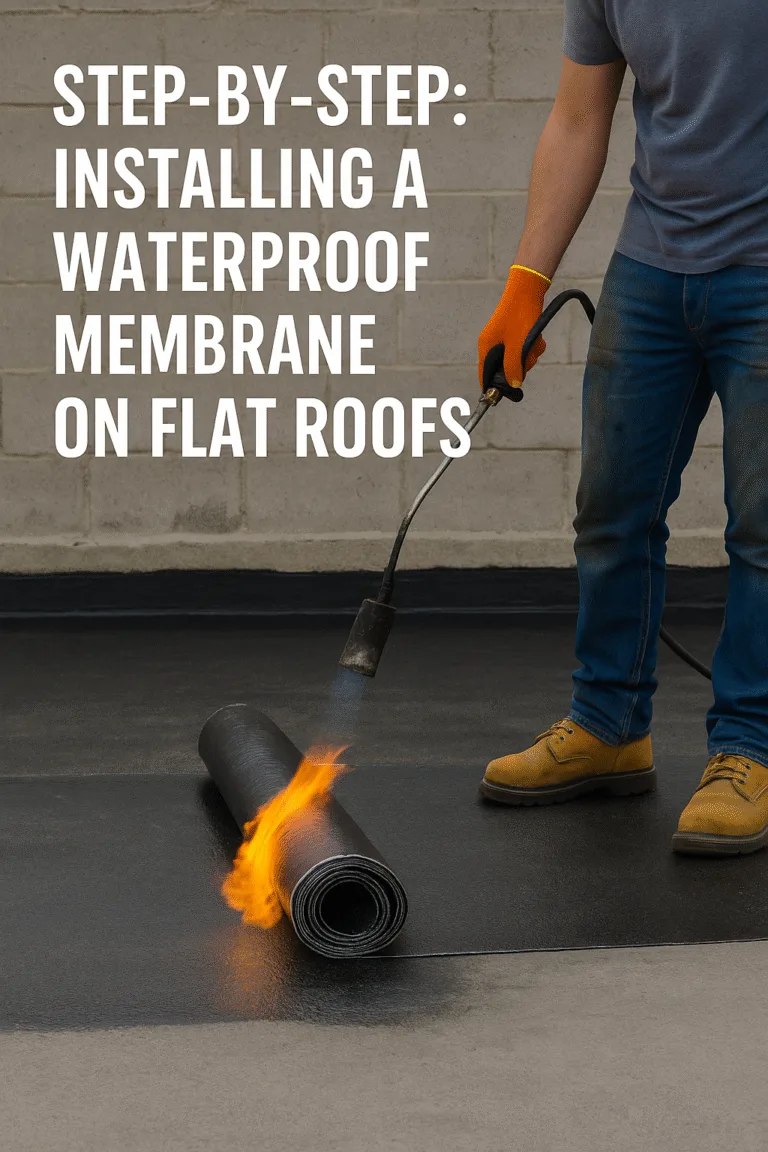Step-by-Step: Installing a Waterproof Membrane on Flat Roofs
Flat roofs are popular across Auckland for their modern look and space efficiency — often used for decks, extensions, and commercial buildings. But while they look sleek, they’re also more prone to water pooling and leaks if not properly waterproofed. That’s why installing a high-quality roof waterproof membrane is essential to protect your home from New Zealand’s unpredictable weather.
Here’s a step-by-step look at how professional waterproofers like A Plus Waterproofing install durable, watertight membranes on flat roofs that last for decades.

1. Inspect and Prepare the Roof Surface
Every successful waterproofing job starts with preparation. The surface must be clean, dry, and smooth before any membrane is applied.
We begin by:
-
Checking the structure for cracks, gaps, or damage.
-
Repairing any defects or uneven areas.
-
Removing dust, debris, and oils that could affect adhesion.
In Auckland’s humid climate, this step is crucial — even a small bit of trapped moisture can cause blistering or failure later on.
2. Apply Primer (if required)
Depending on the type of membrane, a primer coat may be needed to enhance adhesion between the substrate and the membrane. For example, torch-on bitumen membranes often use a solvent-based primer to seal the concrete surface and improve bonding.
Our team ensures the primer is applied evenly and allowed to fully cure before moving on to the next step.
3. Install the Waterproof Membrane
This is the heart of the process. Different membranes have different installation techniques, but the goal is always the same — a continuous, watertight barrier that resists Auckland’s heavy rain and UV exposure.
Here are the most common systems we install:
Torch-On Membrane (Bituminous)
A proven method where sheets are heat-bonded with a gas torch, creating a strong seal. The overlaps are carefully welded to prevent water ingress. Ideal for flat or low-slope roofs.
TPO or PVC Membrane (Heat-Welded Thermoplastic)
A more modern, eco-friendly option like Viking Enviroclad — installed using hot-air welding for a seamless, flexible finish. These membranes are UV-resistant and perfect for Auckland’s changing weather.
Cold-Applied or Liquid Membranes
For sensitive areas where heat can’t be used (such as timber substrates), liquid-applied systems form a monolithic, joint-free layer once cured.
Each system is chosen based on roof design, substrate type, and the client’s long-term needs.
4. Detail the Edges, Corners, and Penetrations
Water doesn’t just sit in the middle of the roof — it finds its way into joints, corners, and around pipes or vents. That’s why detailing is one of the most important steps in waterproofing.
We carefully seal every junction using:
-
Reinforced corner patches
-
Sealant-compatible flashing
-
Termination bars or metal edge trims
These details ensure that every potential leak point is fully protected.
5. Add Protection and Finishing Layers
Depending on the project, the membrane may need a protective layer — especially if it’s exposed to foot traffic or used as a deck surface.
Common finishing options include:
-
Protective coatings or UV-stable paints for exposed membranes.
-
Tiled or floating deck systems above the membrane.
-
Gravel ballast or screed for commercial or industrial roofs.
This step not only protects the membrane but also enhances the look and functionality of your flat roof.
6. Test for Leaks and Quality Assurance
Before signing off any project, we perform a full inspection — including flood tests or moisture detection — to confirm there are no weak spots or leaks.
Auckland’s building codes require high standards of waterproofing, and our qualified applicators ensure your flat roof meets or exceeds these requirements.
Why Professional Installation Matters
While DIY videos make it look simple, waterproofing a flat roof is a highly skilled trade. The smallest error in overlap, torching, or detailing can lead to costly leaks down the track.
When you work with A Plus Waterproofing, you get:
-
Licensed applicators experienced with Viking Roofspec and Nuraply systems.
-
Quality materials suited to New Zealand’s climate.
-
Workmanship guarantees and full compliance with NZBC E2/AS1 standards.
Final Thoughts
Installing a waterproof membrane on a flat roof isn’t just about keeping water out — it’s about protecting your investment for decades to come. Whether you’re renovating a home in Auckland or building a new one, the right waterproofing system ensures peace of mind through every season.
For expert advice or a free site assessment, contact A Plus Waterproofing today. We’ll help you choose and install the perfect membrane system for your roof.